Plants are a total must. Maybe you do not realize this throughout your daily errands, but they not only produce oxygen we breathe, but also consume CO2, provide us with clothes, food and food for our food (animals eat plants). We use wood from plants to create paper, furniture, our homes. Heck, plants are even the reason why we have coal!
In this article I want to focus on genetically modified crops. GMO plants and organisms in general are almost always subjects of heated debates. Are they good? Are they bad? Well, are they even new?
Let’s find out!
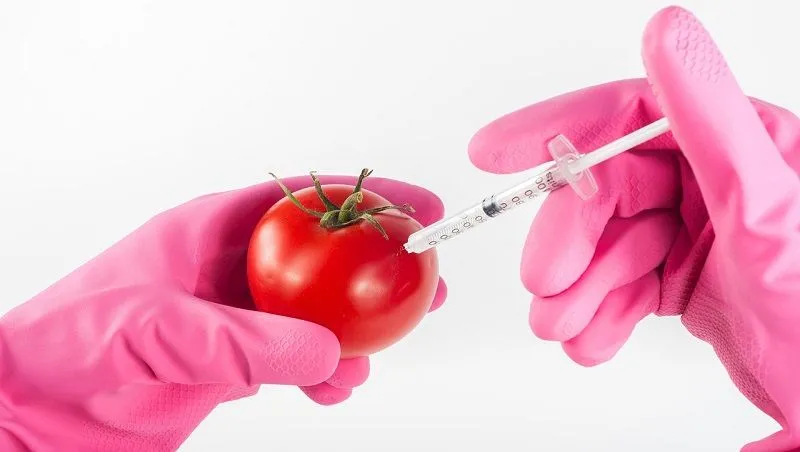
What are GMO plants? - Definition vs What?
Genetically modified crops are by definition plants used in agriculture, the DNA of which has been genetically modified using genetic engineering methods. Okay.
Genetic engineering or genetic modification is defined as the direct manipulation of genes of organism of interest using biotechnology.
Biotechnology (my article about it HERE is the use of living organisms to make some kind of product. There is actually one branch of biotechnology termed Green Biotechnology that focuses on technologies that have positive impact on agriculture. Part of green biotechnology is the creation of new crops, but also creation of new biopesticides and biofertilizers. There is also Yellow Biotechnology that focuses on creation of better food products (and that involves plants as well). And we also have Grey Biotechnology, also termed environmental biotechnology that aims to improve the environment we live in and plants are often being used for that (because they are great at absorbing stuff from soil and atmosphere).
Okay. We did define the terms. But to me this is so not enough. Because yes, by definition GMO plants are plants that were created using genetic modification. Genetic modification is defined as direct manipulation of genes using biotechnology. Biotechnology is defined as implementation of living organisms in order to obtain some kid of product.

Now, imagine yourself stranded on an island. No humans, only you. But you find this great crop, let’s call it violet wheat (because it is violet and looks like wheat). You decide that this will be your main food source from now on and thus start your farming journey. You observe that some of the plants have traits that you enjoy, for example height. Yes, you do not want the violet wheat to be 3 meters tall, 1 meter is enough. You also chose different trait, for example number of seeds - you want more seeds. More is better in this case.
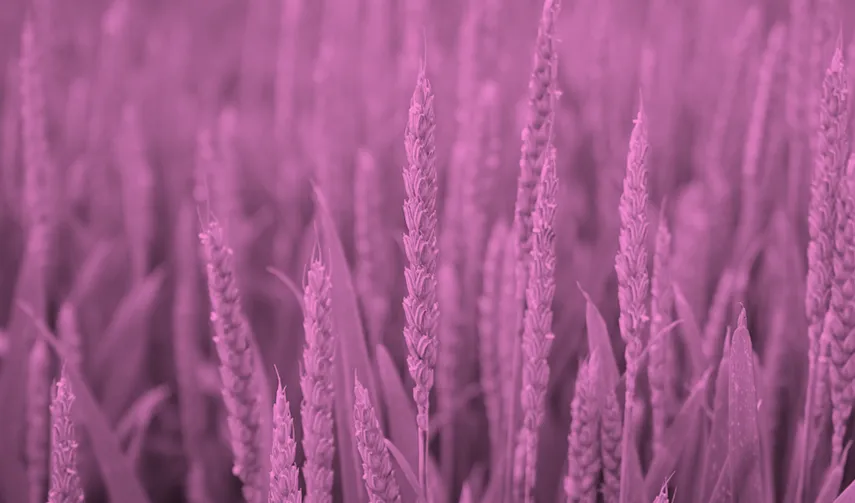
Lucky for you, you are a clever boy/girl/whateveryouwant and decide to implement your knowledge. You start a process of domestication by keeping only seeds of the plants that have good traits (ideal height and number of seeds). Next year you plant only those seeds and again after the harvest will keep only the desired seeds from the best plants. In time you should have plants with properties that you like, and these plants can differ greatly from their cousins found in other parts of the island. Are they GMO plants? Well, common sense says yes, but definition not.
My point here is, that the process of domestication is us humans reshaping and sculpting the genes of certain organisms, so they exhibit traits we deem beneficial. This is something that has been here for thousands of years and is almost as old as humanity itself. People do not think this way about so called traditional breeding techniques and call other GMO plants unnatural. I do not like this. Because everything we have and do is in fact unnatural.. :D
On the other hand, introducing foreign genes into organisms is something that can also have some negative impact on our lives. So, caution is required, but that’s it.
Overview of so called conventional breeding techniques
These are the techniques that do not involve direct genetic engineering. Here are some of them, still used even nowadays:
Selective breeding This is the form of plant breeding already demonstrated with our violet wheat. Only plants with positive traits were used for propagation, or plants with negative traits were excluded from propagation. This is also the case of modern corn. Corn has evolved by selective breeding from its ancestor called teosinte. Actually, maize looks so different to teosinte that scientists for a long time did not consider teosinte as a possible ancestor of maize. Only 5 principal mutations had to occur and look at the dramatic change (natural right?).
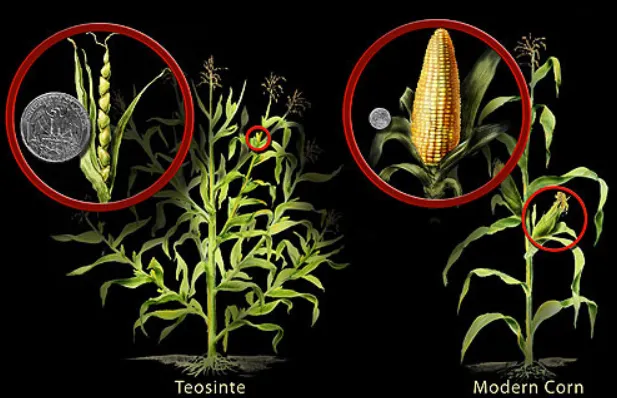
Source
Introgression This type of breeding is used for intogression of certain trait into a cultivated species (didn’t say much right?). Well, it works like this. You have your so called elite line that has all the desired traits you like. Well, almost all of them. There is this another plant line - called donor line that exhibits some trait that you desire. Your goal putting this desired trait into your elite line. So, you cross these two lines. The offspring will have 50% of genes from elite line and 50% of genes from donor line. What you do is that you cross the offspring with each other and then again with elite line (we call this backcrossing). You do this again and again. The result of this is that with good selection parameters you will have in the end a plant that is almost identical to the elite line but has this one tiny segment of chromosome from donor line. And yes, you guessed it this segment of chromosome contains the desired gene of interest. This is due to a phenomenon called crossing-over that happens during meiosis (formation of gametic cells) that results in change of parts of chromosomes to increase variability. Thus, introgression always results in the introduction of chromosome segments and never single genes.
Hybrid breeding This approach implements heterosis. Heterosis can be defined as the superiority of hybrid offspring to each of their pure-line (homozygous) parents. The increase in yield ranges from 10% to more than 100%. Bad thing is that not all the offspring of these hybrid plants possesses superior properties of their parents. Thus, a good idea is to keep the original parent line (homozygous) for creation of new seeds, whereas the hybrids should be harvested. If you want to have a successful production of hybrids you have to avoid self-fertilization of parent lines!
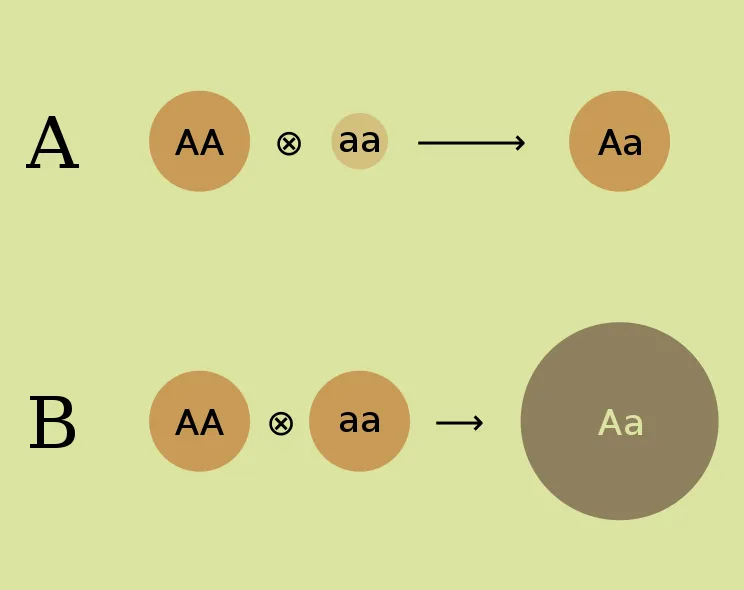
Breeding techniques using biotechnology
Now let’s discuss some techniques that use biotechnology. Modern breeding practice includes methods exceeding simple "crossing and selection" as we have seen with "traditional techniques". However, these techniques are only regarded as biotechnology, but not as genetic engineering.
Mutation breeding You basically use chemical, physical or biological mutagens to increase the natural mutation rate - thus new traits and forms emerge. Sounds dangerous, right? well more than 3200 crop varieties produced by mutation breeding have been already officially registered. Some red-coloured grapefruits were further mutagenized with irradiation to obtain an even more reddish fruit. The thing is that these plants are not radioactive or anything. Mutations are something that naturally occurs in nature and mutagens only increase the speed of these mutations. And after few generations there are no radioactive traces in the plants, so keep eating that grapefruit.
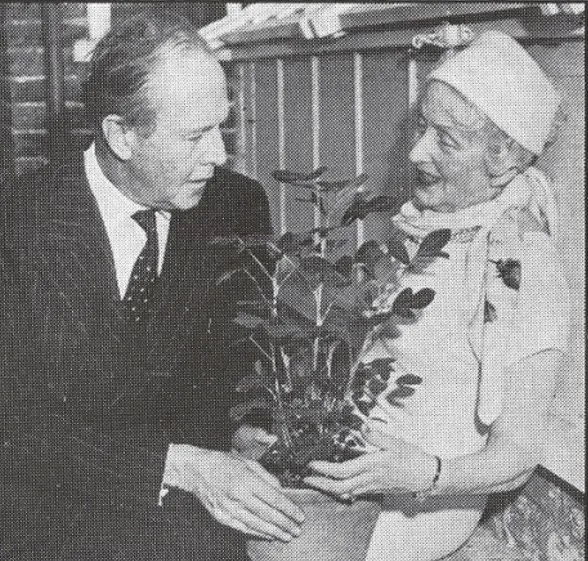
Source
Vegetative propagation Also known as micropropagation. You take small part of plant tissue and transplant it to sterile growth medium. This tissue starts to divide until it forms small plantlets. These are again mechanically divided and regrown. Final step involves use of plant hormones and plantation to soil. The original explant can be amplified several thousand to several hundred thousand-fold. More than 150 plants species are micropropagated - such as banana, apple, or strawberry.
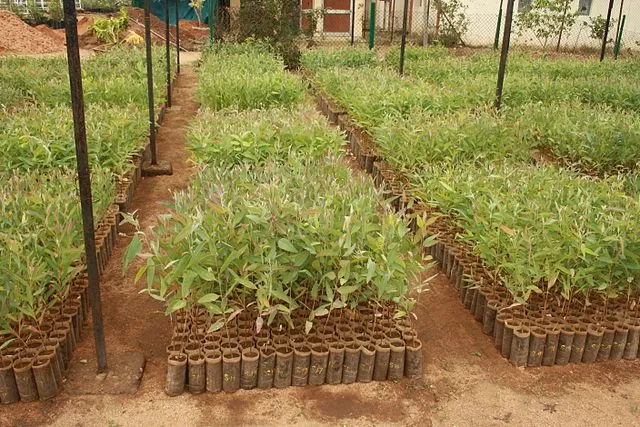
Source
Finally, GMO plants
The German Engineering act defines genetic engineering as the generation of genetically modified organism (GMO, which genetic material has been changed in a way that does not happen in nature (I like this definition much more than Wikipedia one.. :D ). Usually one or two foreign genes are introduced into the nuclear or plastid genome. These genes may originate from different plants, but also from bacteria or other organisms. There are two main advantages to GMO plants.
You can introduce only specific genes (Remember how with introgression you could only introduce parts of chromosomes?)
You can put anything you want into your plant, you are basically limited only by the existence of genes of interest
Let’s take a closer look at the process of creating GMO plants
Step 1: Put your genes there!
You have more options, I am going to introduce 4 of them. Important note to anyone that is going to attempt to transform plants: Plants do not propagate plasmids, in transgenic plants the DNA has always been incorporated into genome as linear DNA!
PEG mediated protoplast transformation Basically, you take protoplasts (cells without cell wall) and DNA that contain your genes of interest and mix them together in presence of polyethylene glycol (PEG) and calcium ions. These compounds destabilize the plasma membrane of cells, thus allowing foreign DNA to enter them. That’s it, yes in real a bit more complicated and precise protocols are created for best efficiency.
Electroporation Almost the same as PEG transformation. But instead of chemicals you use electricity to destabilize plasmatic membrane. You make "pores" in it with electricity - hence the name electroporation. While transforming yeast I also used combination of PEG transformation and electroporation - it increased the efficiency (or at least I tell that to myself before going to bed).
Biolistics This is fun! You take small particles of gold and coat them with your DNA. And then you shoot them into plant cells.. :D The device that delivers the particles to cells is called "gene gun". This method is widely used. However, many plant cells die due to the damage. With this method you are also able to transform chloroplasts of plants.
Agrobacterium transformation Whereas previously mentioned methods of DNA delivery were direct, this one is termed indirect. This approach uses plant pathogen called Agrobacterium tumefaciens capable of transferring part of its genetic material into the genome of a plant cell. By modifying this pathogen a bit, we can achieve that only genetic information of our interest is being transported into plants - clever, right? Learn more about Agrobacterium mediated transformation in the video bellow! :)
Integration of DNA into the plant genome occurs via illegitimate recombination. This mechanism is independent from sequence homology and thus the DNA we put into plant cells can be inserted anywhere in the genome. Even multiple insertions can occur and DNA sequences at the point of insertion are often modified. Thus, presence of promoters is necessary. Promoters are basically parts of genes that say where, when and how often will be a certain gene expressed. It is also very important to not only insert your gene of interest into cells but also another gene called marker gene. It is a gene that tells you whether the transformation was sufficient or not. Marker genes are most often genes for antibiotic resistance (and yes, they are often criticized by opponents of transgenic plants).
What genes do GMO plants contain?
When it comes to plant breeding there are two general goals. Either is the aim to decrease the input (costs) needed in production - input traits, or to alter the harvested products - output traits. Well, money runs the world, right? It is probably most visible here in the field of GMO plants, because virtually all GMO plants carry input traits - be it herbicide resistance or insect resistance. When you have plants resistant to herbicides you can use much stronger dosage of herbicides to kill weeds and only the transgenic crops survive. An example is resistance against glyphosate - one of the most widely used herbicides. Yes, the plants might be resistant, but the herbicide is still present there - and can enter our bodies! Insect resistance on the other hand decreases the necessity to use pesticides - however many plants thus produce substances toxic to insects (and how can we be really sure, they are not harmful to us?). Output traits on the other hand are related to the quality of the product. This means longer shelf life, increased nutritional value, more vitamins, etc. I want to demonstrate such output trait on so called "Golden Rice".
Golden Rice - rice with potential to save millions kids a year
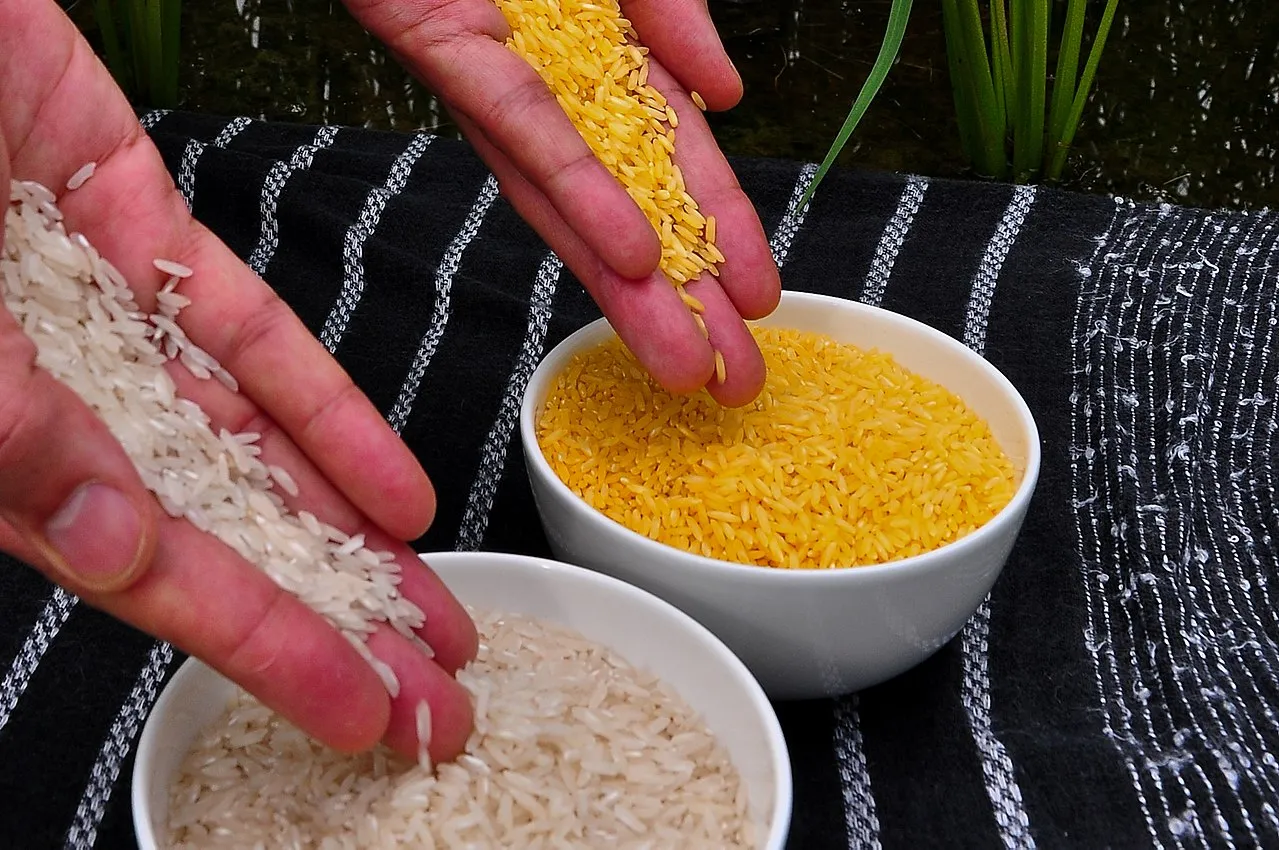
Approximately 250.000 to 500.000 children become blind every year due to vitamin A deficiency, and half of them die within 12 months after losing sight. Vitamin A is not only important for vision, but its deficiency may lead to anaemia and weaken the immune system. This is problem mainly in Asian countries where rice represents main source of food. Two of the genes encoding the biosynthesis of carotenes (such as β-carotene - precursor of Vitamin A) are turned off in the tissue of the grain. Golden Rice is a transgenic plant that expresses two foreign genes in the grain. You guessed it - these genes supplement the two deactivated genes for β-carotene production. Given a daily intake of 200 g of this GMO plant would fully provide the daily Vitamin A needs of children from 1 to 3 years of age - thus saving many lives...
Concluding remarks
I purposely did not write whether GMO plants are good or not, because I believe that if you made it to the end of this article you created your own opinion. I think that the ability to create plants with new properties can drastically improve lives of many – mainly those in need of food or nutrients. However, current usage of GMO plants does not meet the great possibilities that this technology can provide.
Thank you for reading and have a nice day! :)
References:
Biotechnology by Kück and Frankenberg-Dinkel
Genetically modified crops – Wikipedia article
Genetic engineering – Wikipedia article
Golden rice - Wikipedia article